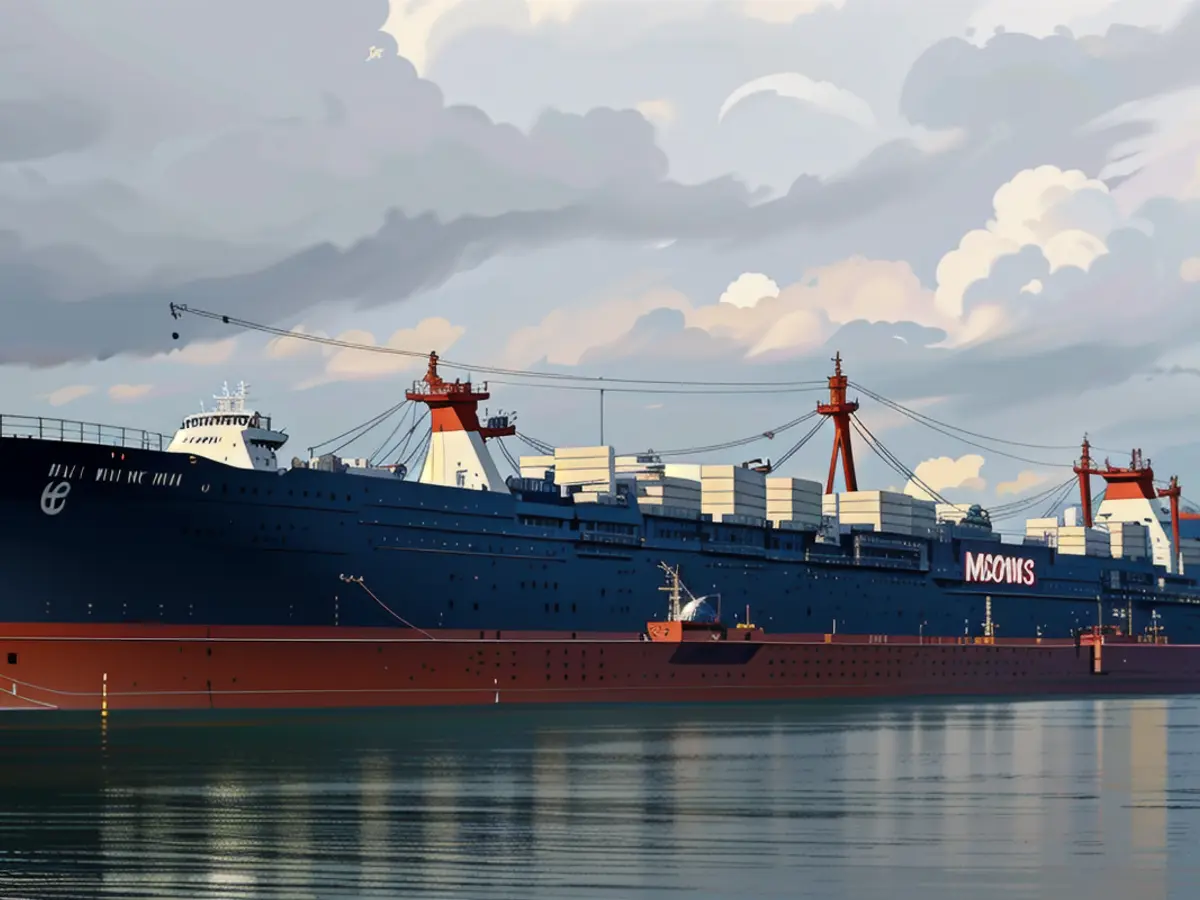- Lower Utilization of LNG Terminals in Germany According to German Environmental Aid Report
Hey there! Let's dive into the topic of LNG terminals in Germany and how their utilization rates have seen some ups and downs.
On the map of Germany, you'll find there are three LNG sites, each with a unique tale to tell about its utilization. Two of these babies belong to the state-run company, Deutsche Energy Terminal (DET), and the remaining one is operated by Deutsche Regas. Let's take a peek at each of these terminals.
The Tale of Two Terminals: Brunsbüttel and Wilhelmshaven
DET's terminal in Brunsbüttel, a former RWE territory, has seen an increase in utilize-o-meter reading, moving from 76% in 2024 to a spiffy 83% in the first quarter of 2025. Meanwhile, Wilhelmshaven, another DET-operated terminal, took a step back, dropping from 71% to 49% during the same period.
DET considers the 66.8% average utilization since the terminal's inception to be a "cracking" level. A DET spokesperson explained that they managed to sell and use almost all available capacities, minus a few exceptions, but also pointed out that the capacity alone doesn't determine the utilization, as it depends on other factors like infrastructure, network connections, maintenance work, and weather conditions.
A Chilly Reception at Mukran
The tale of the Deutsche Regas terminal on the picturesque Rügen island is considerably different. Starting off 2025 at a shivering 5% utilization, according to German Environmental Aid (DUH), the low numbers represent a decline from 14% in 2024. DUH also hinted that the high utilization rate in Brunsbüttel is not as peachy as it seems, as the operator has cut back on capacity, resulting in a 'theoretically high' utilization.
The Lingering Debate: Are LNG Terminals a Blessing or a Curse?
Constantin Zerger, head of DUH's energy department, had some harsh words for the LNG strategy of the previous government: "It's clear as day that the LNG gameplan of the past administration has flopped." He bemoaned the dwindling benefits and the steep price tag for people and nature, urging the incoming federal government to give the strategy a reality check.
On the flip side, DET argues that the resilience of Germany's gas supply, along with that of Europe, has experienced a significant boost thanks to these terminals. They believe that these terminals play a pivotal role in ensuring supply security and maintaining stability in the gas market, regardless of the terminals' utilization, due to their mere existence.
A Few Bricks in the Wall: Key Factors Shaping the Utilization Rates
- Diverse Operational Capacities and Utilization Rates: The operational capacity and utilization levels vary significantly among terminals. Brunsbüttel, with a higher utilization rate, is one of the more bustling terminals, while Wilhelmshaven reflects a higher demand owing to its operations.
- Market Competition and Take-or-Pay Contracts: Low utilization at Mukran is partly due to competition with other terminals, which offer more attractive conditions. Take-or-pay contracts also ensure that terminal operators receive fees, regardless of usage, which can shape operational strategies and capacity utilization.
- Energy Security and Diversification Efforts: Germany's desire to diversify gas imports post the reduction of Russian pipeline gas has led to an increase in LNG terminal deployment. This diversification strategy affects the varying levels of utilization based on strategic priorities.
- Environmental and Local Concerns: Environmental groups like DUH criticize the use of LNG terminals, citing environmental impacts and questioning their long-term viability. Their concerns may influence public support and operational decisions.
- Future Plans and Adaptation to Hydrogen Conversion: Plans for adapting LNG terminals for future hydrogen imports are in the works, which could change how existing infrastructure is utilized and prioritized. Keep an eye on those hydrogen conversions, folks!
With these delightful factors at play, it's no wonder the utilization rates of LNG terminals in Germany remain a fascinating subject to observe and analyze. So, keep checking back to see the twists and turns in this riveting tale!
- Germany
- Brunsbüttel
- Wilhelmshaven
- LNG Terminals
- German Environmental Aid e.V.
- Mukran
- Deutsche Energy Terminal (DET)
- Deutsche Regas
- Utilization
- The utilization rates of Deutsche Energy Terminal's (DET) LNG terminals in Brunsbüttel and Wilhelmshaven have seen varying trends, with Brunsbüttel experiencing an increase from 76% in 2024 to 83% in Q1 of 2025, while Wilhelmshaven saw a decline from 71% to 49% during the same period.
- Deutsche Regas' terminal at Mukran, on the Rügen island, has faced relatively low utilization levels, dropping from 14% in 2024 to 5% at the start of 2025, according to German Environmental Aid (DUH).
- Constantin Zerger, head of DUH's energy department, expressed concern over the previous administration's LNG strategy, stating that its benefits have dwindled and come at a steep price for both people and nature, urging the incoming federal government for a reality check on the strategy.








